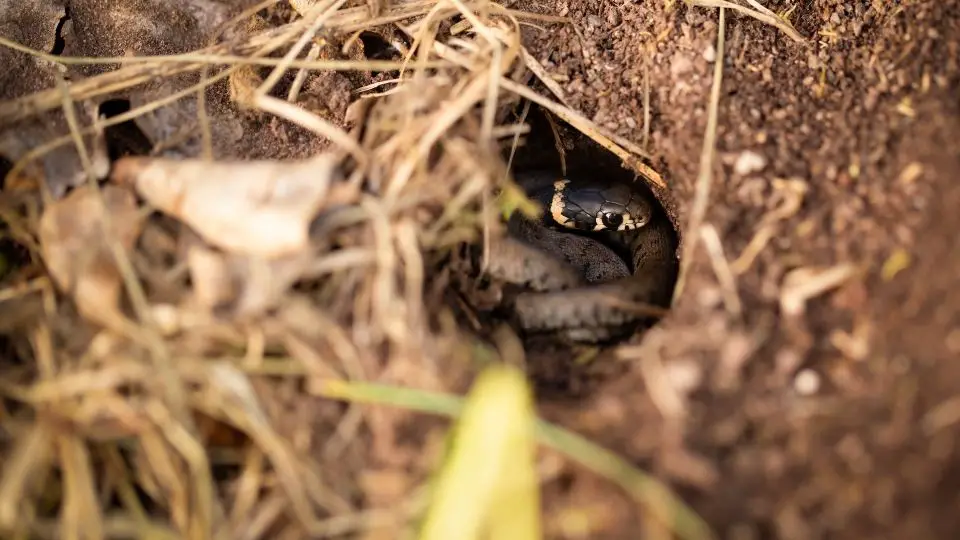Snakes use holes but do not build them themselves. In appearance, snake holes usually are circular and vary in size. Like the round holes in your yard or garden made by moles, snake holes are typically embedded in the grass. They can also be found in larger concrete cracks or trees around your home's foundation.
No homeowner fancies the idea of a snake presence in their yard or garden. Both destructive and anxiety-inducing, snakes can camp in your backyard, and you can’t wait to get rid of them.
Table of Contents
Do snakes use holes?
While it’s a fact snakes often reside and hide in holes, they do not build these holes themselves. However, if you spot holes in your garden or yard, how do you know that they’re snake holes?
How do the snakes holes compare to other animals’ such as chipmunks, moles, raccoons, rodents, turtles, tortoises, and frogs?
Snakes prefer tree hollows, under rocks, barks, and leaf litter. They could also construct their nests in your home, barn, yard, and between walls.
Chipmunk holes vs. Snake holes
While snakes use the holes dug by other animals, it is equally essential to know the rodents digging up the holes in the first place. If you’re unsure whether or not you have snake holes or mole holes, there’s a significant difference between the holes they dig.
Chipmunk holes are pretty neat and small at 2 inches wide, making them attractive to snakes. They’re mostly a perfect width for the snakes that take over after the chipmunks have left. Typically, they lack soil around them and appear even and tidy.
Chipmunks can become a snake’s snack real quick. You’ll typically notice feces outside the opening, and the snakes have a more noticeable smell and look. Chipmunk feces don’t look the same and do not smell as bad.
You can also conduct a quick test by placing chipmunk food outside the hole. If you find it gone, chances are there’s a chipmunk in the hole, but if it’s still there for days, you may want to investigate more.
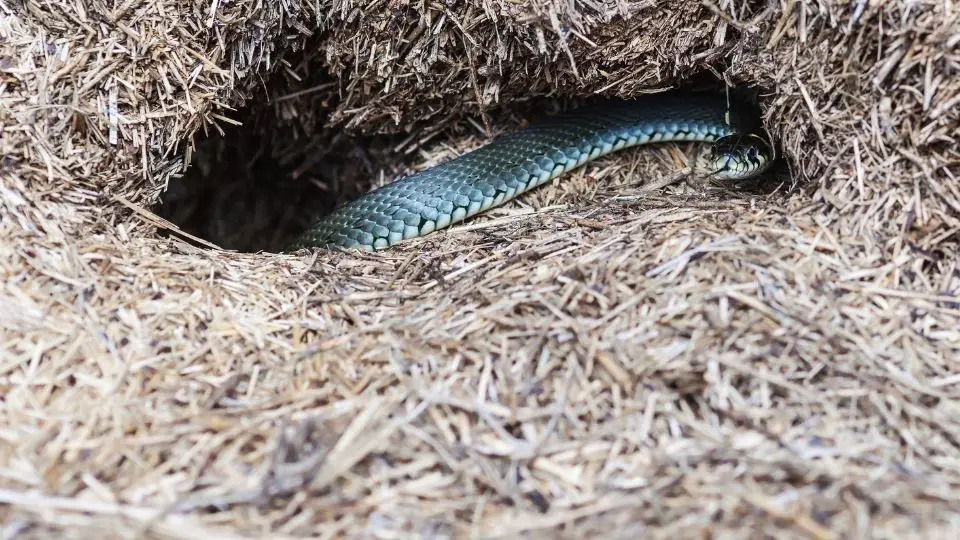
Mole holes vs. Snake holes
Unlike chipmunk holes that are small, neat, and even, mole holes are similar but usually surrounded by a mound of excavated dirt and soil. This is because moles burrow more violently than chipmunks, but their holes are still an ideal home for snakes.
Snakes can also eat the mole and steal its home, although the mole is larger.
In addition, moles’ feces are different from a snake’s and are usually found outside the hole. Moles also have a distinct smell which can be more offensive than a snake’s. Snakes usually emit odors when they feel attacked to deter the predator.
What kind of snakes are in my backyard or garden
The types of snakes in your yard or garden depend on your region. However, the most common snake types you’ll find in holes in the United States include:
- Garter Snakes
- Northern Water Snakes
- Common Kingsnakes
- Redbelly Snakes
- Rat Snakes
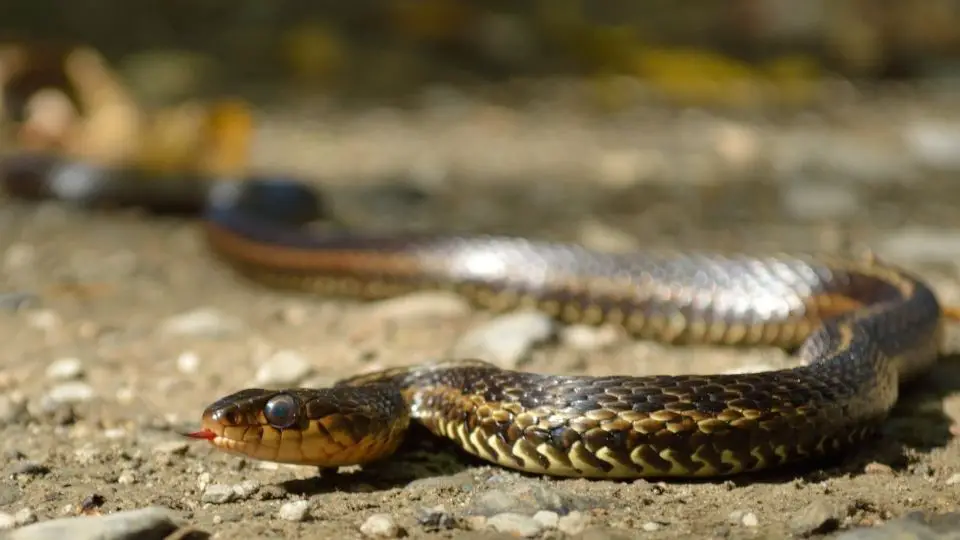
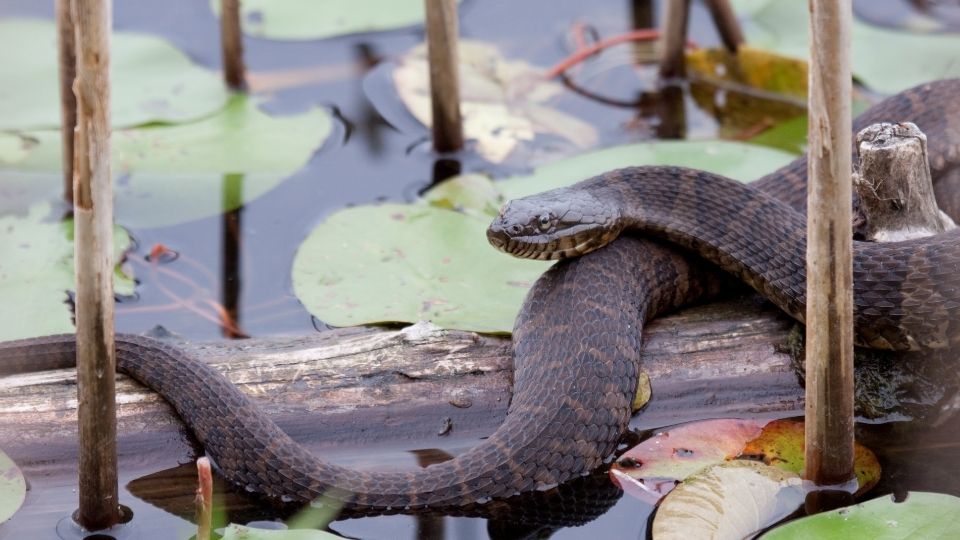
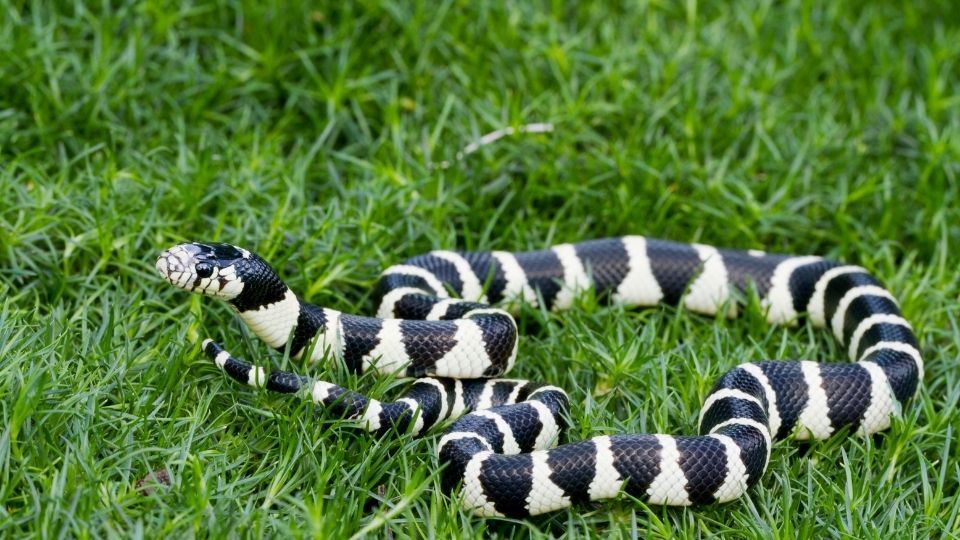
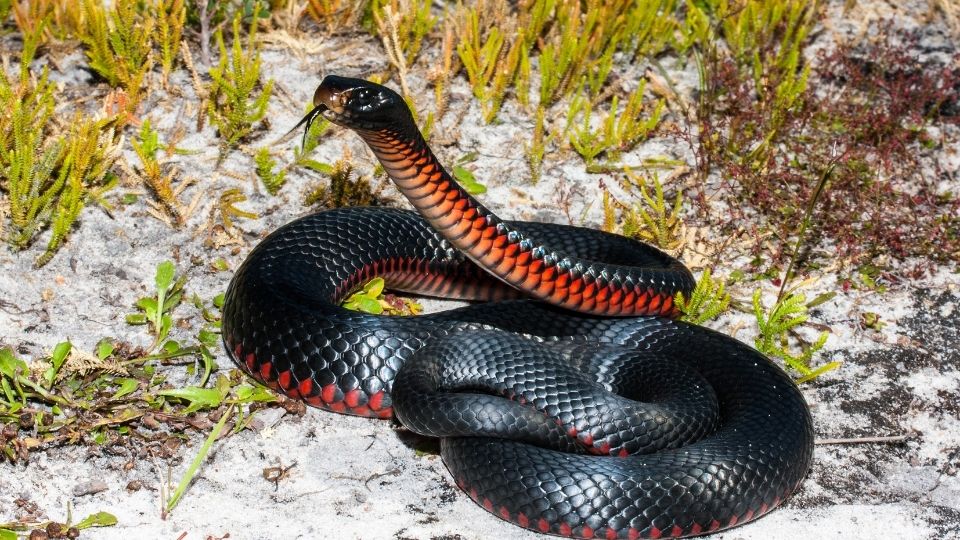
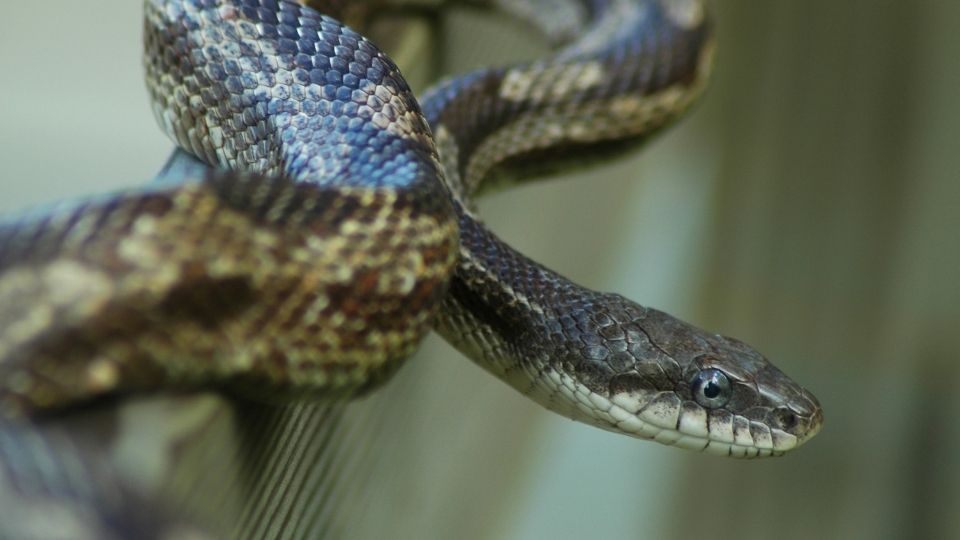
How do you tell if a snake is in a hole?
If you find snake holes in your yard or garden and you’re unsure of whether there is a snake in the hole, you can try the following methods:
Snakeskin
Look out for the freshly shed snakeskin. This is the main sign that a snake is occupying the hole, and you should start looking for ways to get rid of it.
Feces
Look out for any snake feces. Unlike other animals, snake feces are tabular with a dark color and white, chalky urine streaks covering some parts. You could also find fur and bones within the manure from the prey the snake has digested. This is one way of determining if a snake lives in the hole.
Debris
Look out for debris, leaves, and spider webs around the hole. If so, the hole is probably empty; if not, there could be a snake. This is one of the best ways of determining whether a snake hole is empty.
If you wait to see the snake for yourself, remember snakes are cautious reptiles that won’t come out of their holes for a snack or a trap.
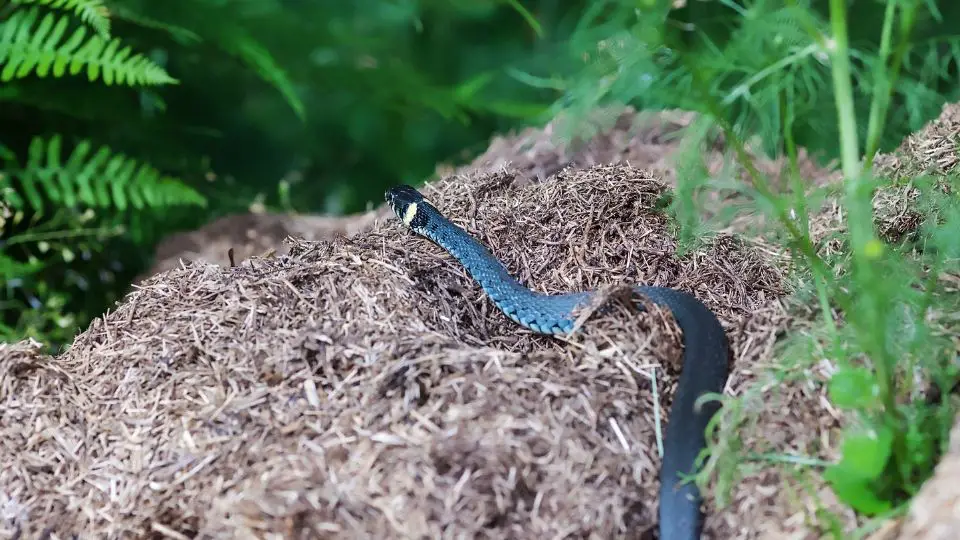
What do you do if you find a snake hole in your yard?
After identifying snake holes in your backyard or garden, you can take a few actions. One easy solution is to simply leave it alone. Although this won’t eliminate your snake problem, it could also worsen it.
Wild snakes are perfect pest control animals, mainly if there are many rodents in the region. Having snakes in your backyard may not sound exciting, especially if you have other pets, but it may be something that some people can be comfortable with.
However, if you’ve spotted a venomous snake such as a rattlesnake, or cottonmouth around your yard, you can get rid of it with the snake hole. Always approach a snake hole cautiously; you can block the entrance with burlap, fabric, wire mesh, or fill the hole with firm soil.
If unsure, it’s always advisable to contact a pest control service that is skilled and best experienced in dealing with a snake infestation. They’re also savvy with the local protective laws or ordinances for the venomous and non-venomous snakes in your area.

